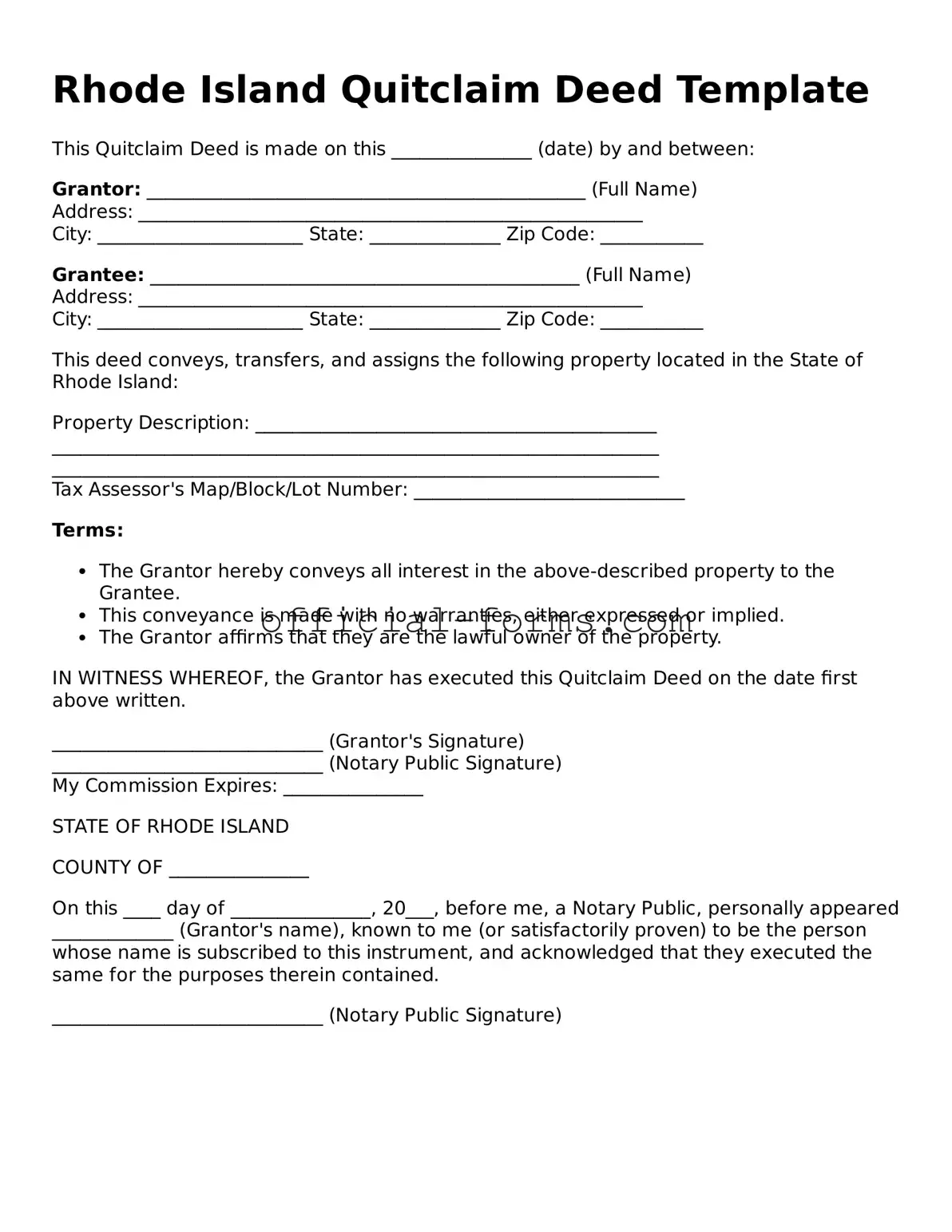Filling out a Quitclaim Deed form in Rhode Island can be a straightforward process, but mistakes are common. One significant error occurs when individuals forget to include the legal description of the property. This description is crucial, as it identifies the exact location and boundaries of the property being transferred. Without this information, the deed may be deemed invalid.
Another frequent mistake is failing to properly identify the grantor and grantee. The grantor is the person transferring the property, while the grantee is the person receiving it. If either party's name is misspelled or incorrectly stated, it can lead to complications in ownership. It is essential to ensure that names are accurate and match official identification documents.
Some people neglect to have the deed notarized. In Rhode Island, notarization is a vital step in the process. A notary public must witness the signing of the document to verify the identities of the parties involved. Without this step, the deed may not be legally recognized, which can create issues down the line.
Another common error is not including the date of the transfer. This date is important for establishing when the property changed hands. If the date is missing, it can lead to confusion regarding the timeline of ownership, which may complicate future transactions or legal matters.
Additionally, individuals sometimes overlook the need to check for existing liens or encumbrances on the property. Failing to disclose these can lead to disputes after the transfer has occurred. Buyers should conduct a title search to ensure they are aware of any claims against the property before finalizing the deed.
Improperly filling out the form can also happen when people do not follow the specific requirements set by the state. Each state has its own rules regarding the format and content of deeds. Ignoring these regulations can result in the deed being rejected by the local recording office.
Moreover, some individuals forget to include the necessary fees for recording the deed. Rhode Island requires payment of a recording fee at the time of submission. If this fee is not included, the deed may not be processed, causing delays in the transfer of ownership.
Lastly, many people fail to keep copies of the completed Quitclaim Deed. After the deed is signed and submitted, retaining a copy is essential for personal records. This documentation can be helpful in the future for proving ownership or resolving any disputes that may arise.
